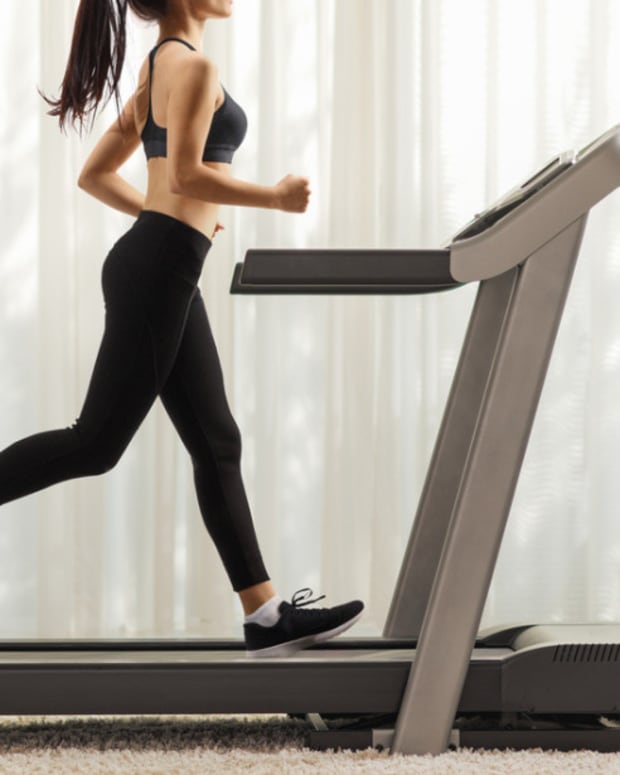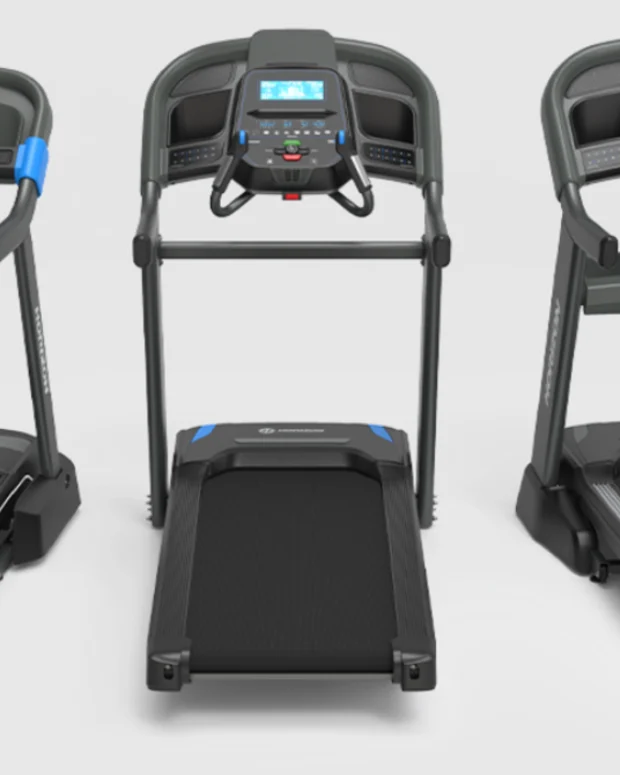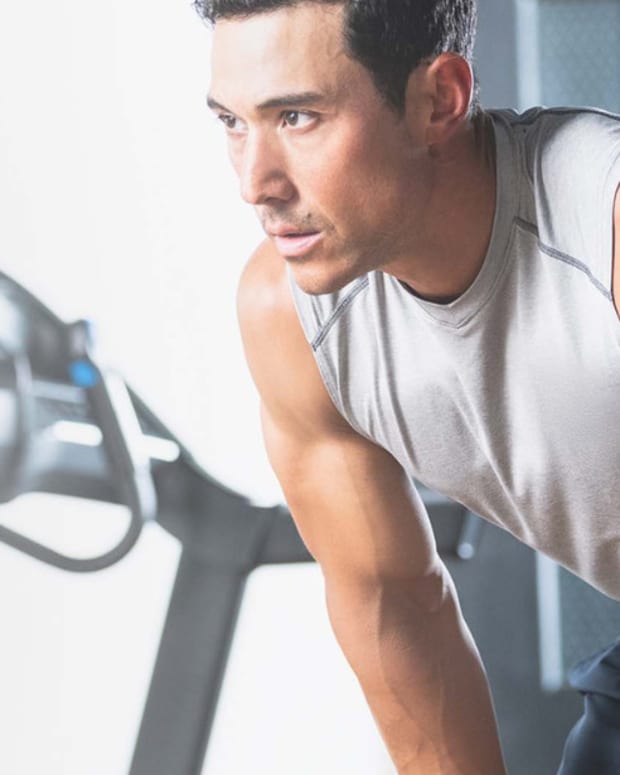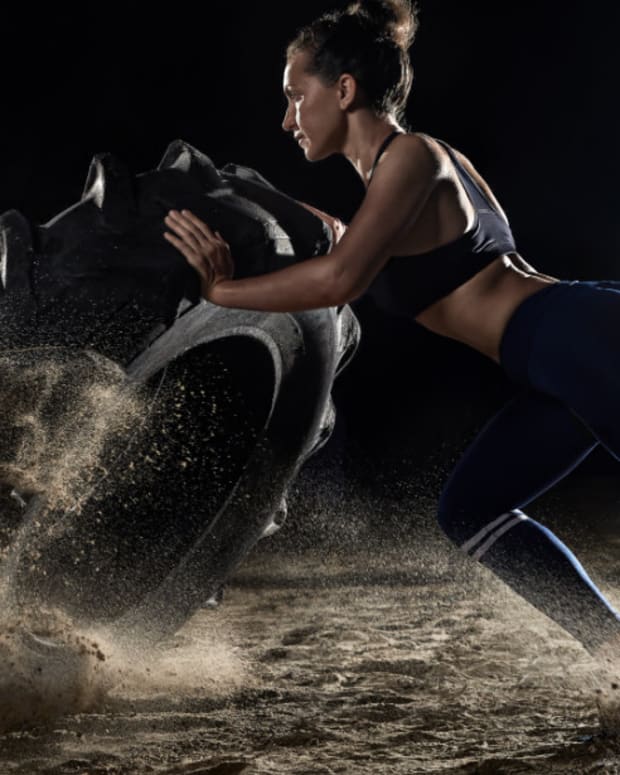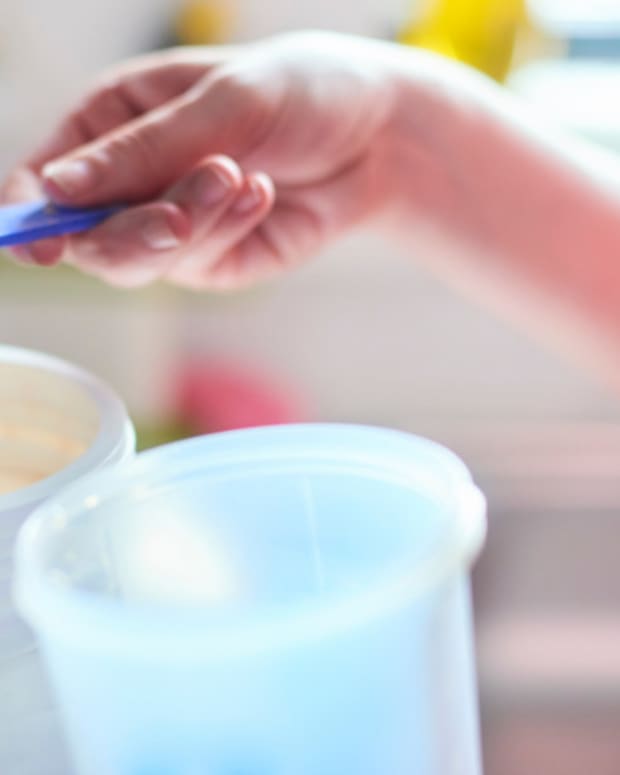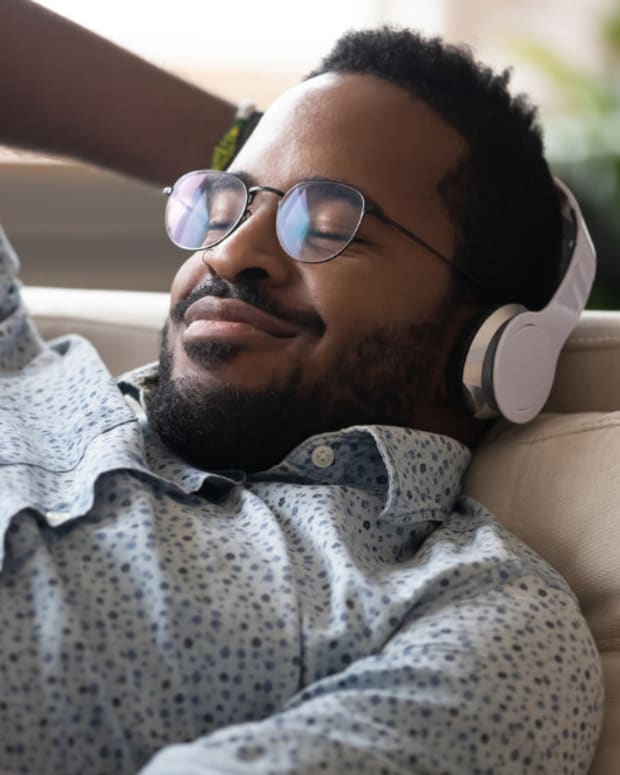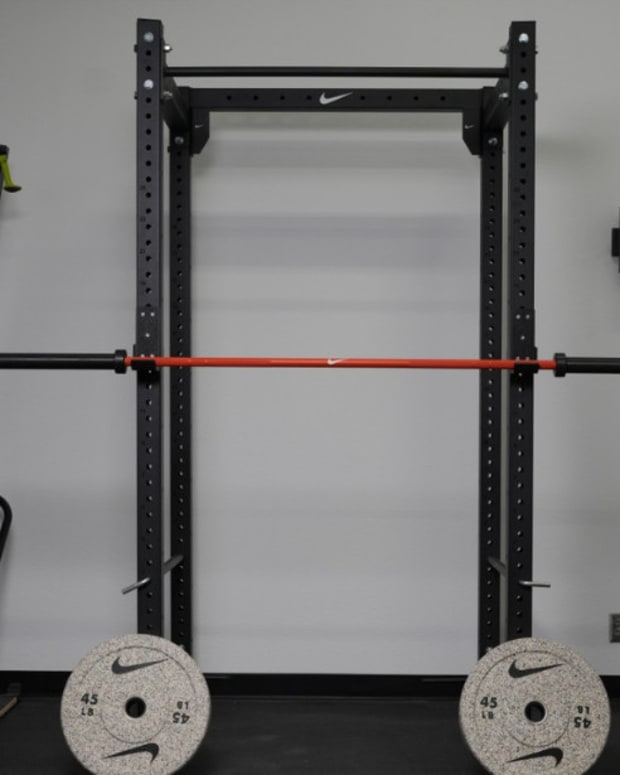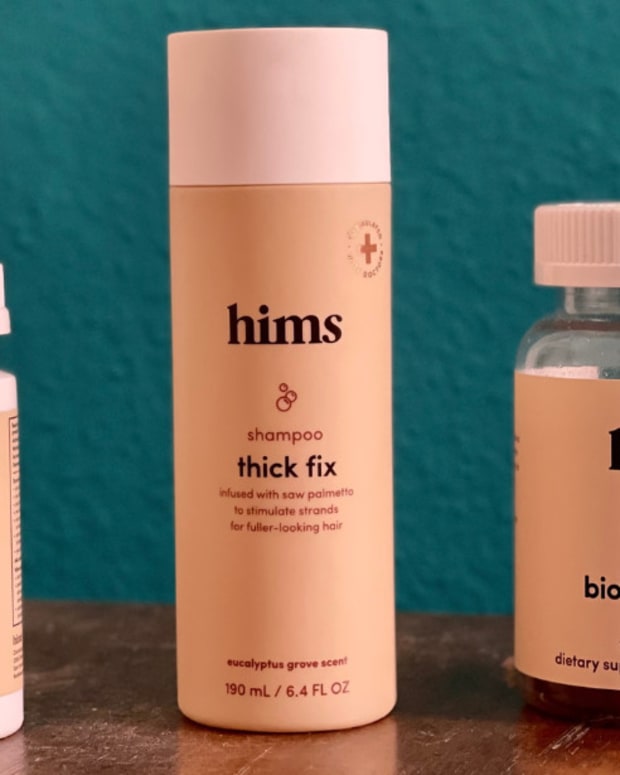The products featured in this article have been independently reviewed. When you buy something through the retail links on this page, we may earn commission at no cost to you, the reader. Sports Illustrated editorial staff are not involved in the creation of this content. Learn more here.
When designing a home gym in 2024, most people overlook one of the most crucial parts—the flooring. While it may not seem important, the flooring in your workout area will protect your home floor and workout equipment from wear and tear, while providing a comfortable workout.
Proper gym flooring will protect your home from dropped weights, scuff marks and sweat puddles while providing extra traction and cushioning your workouts. Whether you’re a serious weight lifter, yoga enthusiast or simply someone who needs an area to do some light stretching and core training, proper flooring will elevate your home workout experience.
In this guide, we’ll tell you what to look for and what sort of flooring you should choose based on your training style and durability needs, and share our best picks to help you set up the perfect home gym.
Our Picks for the Best Home Gym Flooring of 2024:
- Best Overall Home Gym Flooring: Living.Fit Gym Mat
- Best Home Gym Floor for Heavy Weights: REP Fitness 3x4 Floor Mats
- Best Rubber Home Gym Flooring: Living.Fit Gym Mat
- Best Wood-Look Home Gym Flooring: INC Stores Premium Faux Wood Foam Locking Tiles
- Best Budget Home Gym Flooring: AmazonBasics EVA Puzzle Exercise Mat
- Best Foam Home Gym Flooring: ProSource Fit Extra Thick Foam Puzzle Mat
- Best Vinyl Home Gym Flooring: Lucida Vinyl Flooring Tiles
- Best Carpet Tile Home Gym Flooring: Uyoyous DIY Carpet Tiles
- Best Artificial Turf Home Gym Flooring: Rubber Flooring Inc Performance Turf Rolls
- Best Heavy-Duty Home Gym Flooring: PLAE Achieve
Best Overall Home Gym Flooring: Living.Fit Gym Mat
Key Features:
- Price per square foot: $5.56
- Best for: Use with barbells and dumbbells, or any other high-impact training
Flooring is the foundation of your home gym, so making the right choice as far as impact, durability, and versatility is key. Living.Fit gym mats check off all the boxes.
These heavy duty rubber mats are shock absorbent and self-healing, meaning they retain their shape and integrity upon the impact of your barbell, kettlebell, or body. Whether you’re weight training, doing pilates or HIIT, these grippy rubber floor tiles are among the best home gym flooring options out there.
Complete with a stylish fleck design, these gym floor mats are the perfect non-slip piece of gym equipment you need. At 40 inches by 40 inches each, the brand recommends purchasing at least two mats to fit under a dumbbell rack and three to fill a 10 foot garage gym space.
Pros:
- The rubber interlocking design makes it a highly-customizable option to suit any home gym flooring
Cons:
- At $5.56, they’re slightly more high end
Best Home Gym Floor for Heavy Weights: REP Fitness 3x4 Floor Mats
Key Features:
- Price per square foot: $6
- Best for: Olympic lifting or powerlifting
If you’re a serious weightlifter, regularly performing deadlifts, Olympic lifts or any other exercise where a heavy barbell is in contact with the ground, a lifting platform is a smart option. You’ve likely seen and used these in commercial gyms, and thanks to REP, now you can have a lifting platform at home.
These three foot by four foot mats are made of high quality odorless rubber to protect your floor from heavy impacts, and also cushions the blow to your equipment. These dense rubber mats are the same that can be found at most commercial gyms and are designed to withstand the demands of any type of barbell training. If you enjoy CrossFit, powerlifting or Olympic weightlifting, and have space in your basement or home gym, REP Fitness floor mats are an excellent investment.
The only downside is that this flooring isn’t meant to be topped by plywood or another hard surface flooring, but for serious weightlifters, you can’t beat pro quality gym mats, and REP Fitness’ floor mats are among the highest quality gym flooring on the market.
Pros:
- Durable design built to withstand heavy strength training
Cons:
- Main purpose is barbell training
- Expensive
Best Rubber Home Gym Flooring: Living.Fit Gym Mat
Key Features:
- Price per square foot: $5.56
- Best for: Use with barbells and dumbbells, or any other high-impact training
If you’re looking for rubber flooring that’s strong enough to withstand nearly any sort of training demands, the Living.Fit Gym Mat is an excellent choice.
Unlike foam mats, heavy duty rubber mats won’t easily damage or lose their shape with prolonged use. The puzzle-piece design makes it very easy to assemble these mats to fit any size and shape to suit your workout area
They’re easy to set up, though slightly time-consuming, and easy to move if you ever need to pack them up for any reason.
Pros:
- The rubber interlocking design is a highly-customizable, durable option for your home gym flooring
Cons:
- At $5.56, they aren’t the cheapest option
Best Wood-Look Home Gym Flooring: INC Stores Premium Faux Wood Foam Locking Tiles
Key Features:
- Price per square foot: $2
- Best for: Home workouts that don’t involve heavy weights being dropped
TheINC Stores Faux Wood Foam Tiles combine the look of wood with the comfort and protection of foam padding.
Available in eight color options, these interlocking tiles are easy to install and provide a nice visual touch if you want to elevate your flooring beyond plain foam tiling.
As with any other foam flooring, these are best for low-impact training and aren’t designed for heavy weight lifting. But for any sort of bodyweight training, they’re designed to provide good traction and cushioning under your feet.
Pros:
- Wood flooring pattern to elevate the style of your home workout area
- Cushioned
Cons:
- Less durable than rubber or vinyl
Best Budget Home Gym Flooring: AmazonBasics EVA Puzzle Exercise Mat
Key Features:
- Price per square foot: $1.81
- Best for: Low-impact workouts, or placing under heavy exercise equipment
For those looking to pick up some gym flooring on a budget, you really can’t beat the AmazonBasics EVA Puzzle Exercise Mats.
These interlocking EVA foam mats provide a gentle cushion to help keep you comfortable during low-impact or bodyweight workouts. They aren’t really designed for use with heavy weights, and dropping weights could damage the foam, but if you’re not dropping anything heavy and need something affordable and cushioned, they’re a great choice.
If you do any training on the floor, such as bodyweight movements, plyometrics, stretching or yoga, these mats provide some cushioning to make it more comfortable. These mats would also work well as a protective layer under something like a treadmill or exercise bike.
Pros:
- Lightweight
- Portable
- Very affordable
Cons:
- Not as durable as thicker rubber mats
Best Foam Home Gym Flooring: ProSource Fit Extra Thick Foam Puzzle Mat
Key Features:
- Price per square foot: $1.88
- Best for: Cushioning and noise damping during low-to-moderate impact workouts
If you don’t need flooring that can withstand the force of heavy weights being dropped, and you prefer comfort and cushion, foam flooring is the way to go.
These foam puzzle mats are designed to provide traction and comfort, making them a good choice for bodyweight training, cardio workouts, kickboxing or any other low-impact exercise where you won’t be dropping hundreds of pounds on the floor, over and over.
The ProSource mats are designed to be water resistant for easy cleaning, as well as noise-damping. The locking puzzle design makes installation simple, and you can easily pack them up.
Pros:
- Lightweight design
- Water-resistant
- Noise-damping cushioning
- Affordable
Cons:
- Foam may not last as long as rubber, especially with high-impact training
Best Vinyl Home Gym Flooring: Lucida Vinyl Flooring Tiles
Key Features:
- Price per square foot: $1.80
- Best for: Style and aesthetics
If you want flooring that looks and feels like wood, vinyl is a great option. While faux wood made from foam provides cushioning, vinyl flooring is designed to provide much less cushioning and protection. It is waterproof, making it easy to wipe up any sweat puddles that form during exercise.
Because of the lack of cushioning, if you’re doing any floor exercises, you’ll still want to use something like a yoga mat to keep yourself comfortable.
This flooring would likely work best underneath cardio equipment for example, where the style matters and you’re likely to generate sweat, and you don’t need much padding or function.
Pros:
- Looks very similar to wood
- Waterproof
Cons:
- Has next to no cushioning
- Won’t hold up very well to heavy weightlifting
Best Carpet Tile Home Gym Flooring: Uyoyous DIY Carpet Tiles
Key Features:
- Price per square foot: $1.70
- Best for: Noise damping, cushioning
For those who want a softer surface without too much cushioning, carpet tiles are a fine alternative. Carpet isn’t specifically designed to withstand heavy loads and dropped weights, but it works great underneath cardio machines, or in a room where you won’t be repeatedly dropping weights.
One major advantage of carpet is its ability to dampen noise. If you’re used to working out on cement floors in a garage or basement, carpet adds a nice soft cushioning to walk on, while absorbing a lot of the echoes and loud noises.
One drawback: Water absorption. If you sweat a lot during cardio, carpet may not be the best choice for you.
Pushing sleds around or regularly dropping free weights may cause the carpet to wear out faster, but for any other type of training, carpet is a nice alternative to rubber or foam padding. This DIY kit is also easy to install at home, so you can install carpeting without hiring a professional.
Pros:
- Easy to install and cut the tiles to fit the dimensions of any workout space
Cons:
- Not quite as durable as rubber flooring designed specifically for gyms
- Can absorb sweat
Best Artificial Turf Home Gym Flooring: ProMounds Sled Strips
Key Features:
- Price per square foot: $4.65
- Best for: Athletic performance training
For the athletes out there who want to mimic field conditions, the ProMounds Sled Strips are a great choice.
Whether you’re pushing a sled, practicing your agility work or simply prefer working out on turf surfaces, these performance turf rolls are easy to install and built to last. With five millimeters of foam backing for shock absorption, they’re designed to provide traction and comfort for any workout.
The ProMounds sled strips can be used inside and outside, though it won’t last as long outside. The rolls are four feet by 30 feet.
Pros:
- High-quality turf
- Built to last
Cons:
- If you’re not training for sports or pushing a sled, you may not need or want turf flooring
Best Heavy-Duty Home Gym Flooring: PLAE Achieve
Key Features:
- Price per square foot: $8-$17.50
- Best for: Heavy-duty use
For the most durable, heavy-duty flooring on the market, look no further than the PLAE Achieve rubber mats. These are commercial-grade flooring mats built to withstand the heaviest loads and nearly any sort of training.
The 18 millimeter thickness is specifically designed to absorb blunt impact, such as dropping weights and moving around heavy equipment. These mats also come with a 15-year warranty when installed according to the manufacturer's instructions, so they’re an investment that will last for quite some time.
They’re not cheap and require adhesive to properly install, but they’re the highest-quality mats available.
Pros:
- Built specifically for to withstand heavy wear-and-tear in commercial gyms
Cons:
- They require adhesive, so you won’t be able to easily move them after installation.
What to Look for When Choosing Flooring for Your Home Gym
Not all flooring is created equal, so you need to consider both your existing flooring and training needs.
First, consider the material. If you’re using barbells and performing heavy lifts, you’ll want something that provides cushioning and traction but isn’t so squishy that it impacts your workout. For example, if you’re squatting on a foam pad, your feet will move around too much to safely execute the lift.
In that situation, dense rubber flooring may be ideal, as it won’t be squishing around under your feet.
However, if you’re training on the ground with a lot of bodyweight exercises, padded flooring with a bit of cushioning may be exactly what you need, as you don’t need to worry as much about stability.
Turf flooring is another option, and is particularly useful for athletes who play on a field. However, unless you have a big workout area, you probably won’t experience the full benefits of having turf. Many athletic performance training centers use long patches of turf to provide a runway, allowing athletes to sprint and move around—a small home gym may not have this much space.
Finally, if you want the look of hardwood, you can always use vinyl flooring that won’t chip when you drop heavy weights. However, this is mostly for aesthetic purposes, not function.
Benefits of Installing Home Gym Flooring
Home flooring provides traction and stability while protecting your home from excess wear and tear.
If you have carpet flooring, getting enough stability to perform heavy lifting may be difficult, while hardwood flooring can easily chip and crack with too much use. In these cases, something like rubber flooring will provide traction AND protection.
You’ll also experience improved workout quality when purchasing flooring that matches your training style.
If you find yourself on the ground a lot doing core training, stretching or yoga, a cushioned surface can make your workout much more comfortable, compared to doing something like crunches on a hardwood floor.
Also, some mats may provide noise damping as they absorb the impact of dropped weights. If you have neighbors who may not appreciate loud weightlifting sessions, noise-damping mats may be a good option.
How to Clean Home Gym Flooring
Unless your only activity is light stretching, you’re going to be sweating on your floor, so proper care and cleaning are essential. The flooring you purchase should include cleaning instructions from the manufacturer, and we suggest following those.
For example, while mopping with a disinfectant solution may be appropriate on rubber or vinyl, if you have turf or foam, you may need different cleaning solutions. There’s no one-size-fits-all recommendation that fits every type of flooring.
Types of Home Gym Flooring
Material
The most common materials are vinyl, rubber, foam and turf. Olympic lifters may also want a dedicated lifting platform, which is often made of sturdy wood. If you want to add a recovery section to your gym, such as a cold plunge tub or ice bath, make sure you opt for flooring that can withstand a little water.
Installation Method
The installation method is important, as there are both DIY flooring options and professional options. Many manufacturers sell flooring in squares that lock together like puzzle pieces, allowing you to quickly assemble your own flooring to match any size needs.
Other options, like turf, vinyl or lifting platforms may require professional installation to be done properly.
Permanence
Are you looking for removable flooring you can put away when you need to, or take with you when you move? If so, you’ll want something light and temporary, likely DIY rubber flooring mats.
However, if you’re going to be somewhere for a long time, or it’s a permanent gym space, you can opt for a professionally-installed, permanent solution.
Cost
Finally, you should figure out your budget ahead of time, before you end up committing to a large flooring project that can quickly become more expensive than planned.
Prices vary based on the material and installation method, and you can get anything from inexpensive DIY flooring to professional installation. Figuring out your budget ahead of time will help you figure out your budget per square foot, and stick to that budget.
FAQs
How long do foam mats last?
This really depends on how you’re using them. If you’re doing bodyweight training, they’ll last for years! However, heavy equipment can compress the foam over time, causing it to lose its shape and need replacement.
How thick should gym flooring be?
For maximum padding, many flooring options are 0.5—1.5 inches thick, with more thickness providing more cushioning.
Is foam or rubber gym flooring better?
If you want the most padding and comfort, foam flooring is the better choice. However, while not as cushioned, rubber flooring tends to last longer under heavy weight demands.
Is gym flooring necessary?
It’s not necessary, but can be quite helpful. Gym flooring will protect your home from drops, dings and sweat puddles, and if you’re dropping your dumbbells or barbells, the flooring can provide extra cushioning that protects your weights from damage.
Do I need gym mats on concrete?
You don’t need gym mats, but we highly recommend them. Any exercise where you’re laying on the floor will be painful without a mat, and if you’re using barbells or dumbbells, dropping them on concrete can easily damage both the weights and your floor.
How do I protect my floor from heavy weights?
If you’re lifting heavy weights, rubber flooring is a great choice to absorb the blow. And if you specialize in barbell training and want the best possible setup, a lifting platform is designed to protect your floor AND provide a stable training surface.
What flooring do commercial gyms use?
Commercial gyms most commonly use rubber flooring, as it’s highly durable and easy to clean. Athletic training or sports performance centers often use turf as well, though this is less common in commercial gyms.
Final Thoughts
If you’ve got a home gym set up and haven’t yet picked up gym flooring, it’s a fantastic investment to level up your workouts while protecting your home and equipment from damage.
Use this guide to help you make the best choice for your individual needs and preferences, as you really can’t go wrong with any of the choices on our list.
Prices are accurate and items in stock as of publish time.










